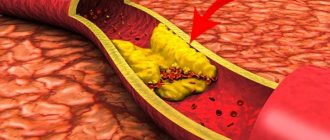A cramp is a painful tonic spasm that is sometimes mistakenly called a cramp. Part of the muscle or the entire muscle can contract. The duration of contraction ranges from several seconds to several minutes. The syndrome develops more often at night in rest and warmth, when the opposing muscles - antagonists - are relaxed. Quite often, muscle spasms are preceded by fasciculations, clearly visible to the eye in the daytime. The attack passes with clear consciousness, there are no associated disorders. Crumpy practically does not occur in children under 8 years of age, but after 65 years of age the frequency increases sharply. In older people, tonic muscle contractions impair the quality of sleep or cause insomnia.
The frequency of muscle involvement is distributed as follows:
- muscles of the leg and foot;
- biceps brachii;
- extensors of the fingers;
- muscles of the trunk and diaphragm;
- submandibular
A distinctive feature of crampy is severe pain that occurs at the moment of muscle spasm, which stops when it ends. During spasm, the muscle becomes dense and sharply painful when touched. Every 10th person suffers from crampy on a regular basis.
At CELT you can get advice from a neurologist.
- Initial consultation – 4,000
- Repeated consultation – 2,500
Make an appointment
Crumpy: what is it and why does it occur?
Involuntary muscle contractions most often appear unexpectedly or after physical activity. They capture the entire muscle or part of it. The spasm manifests itself as a muscle roll, hard to the touch.
During the daytime, the syndrome worries people suffering from local neuroosteofibrosis in the area of the popliteal fossa with vegetative-irritative manifestations in cervical and lumbar osteochondrosis. At night, seizures occur in patients with clear cerebral disorders. Crampy syndrome appears day and night, usually in persons with cerebral, local and spinal disorders.
general information
Cramp syndrome (from the English cramp - cramp) is a very common pathological condition that is observed in almost 90% of people on our planet. One theory of the occurrence of the disease is related to the fact that most of the population is engaged in work with significant physical exertion or sedentary activities.
The age group corresponds to the 65+ category, but the syndrome can be observed among all categories. The rarest cases of convulsive seizures are recorded among children of preschool and primary school age. Men and women are equally susceptible to the disease.
Causes of painful muscle contractions
Factors that provoke the development of spasms are the following:
- Iatrogenic. In other words, they appear as a result of therapy, after hemodialysis, treatment with diuretics and taking lithium drugs.
- Metabolic. Convulsions can occur due to liver cirrhosis, tetany, hypothyroidism, gastrectomy, and various electrolyte disturbances. Moreover, sudden muscle spasms often bother women carrying a child, especially at 6-7 months.
- Neurological. Such factors play a significant role in the appearance of involuntary muscle contractions. Neurological causes include amyotrophic lateral sclerosis and other pathologies of the anterior horn.
Sudden muscle contractions also occur as a result of myotonic type disorders, rigid person syndrome (rare), and hyperactivity of motor units. It can also be triggered by spasms, which are caused by systemic damage to the tissues of the lower extremities. For example, with diffuse myositis and Becker's dystrophy.
In addition to the reasons listed, the following ailments can lead to the appearance of painful muscle contractions: myalgia syndrome, lameness, exposure to toxic substances on the body (strychnine and insecticides). Experts sometimes talk about idiopathic seizures, which are associated with the individual structure of the body, hereditary factors and personal predisposition.
In completely healthy people, crampy syndrome can occur due to dehydration, heavy alcohol intoxication, or excessive physical activity. Pathologies of peripheral muscles, veins, arteries and nerves contribute to the development of painful spasms.
At rest, such attacks occur as an early manifestation of amyotrophic lateral sclerosis. Crumpy syndrome manifests itself in the muscles of the lower jaw, thighs, tongue, neck, back, abdomen and arms. Such painful spasms can still be observed in the presence of such factors:
- Damage to peripheral nerves in the form of sensory disturbances such as burning, tingling, painful sensitivity or numbness.
- Lack of iron and magnesium.
- Becker's muscular dystrophy. This genetic disease is characterized by damage to the proximal muscles of the lower extremities.
- Use of certain medications.
- Pain in the lumbar region, spreading to the legs.
- Hemodialysis and plasmapheresis are procedures aimed at extrarenal blood purification.
- Intervertebral hernia.
Cramps quite often occur during pregnancy, as well as during obliterating atherosclerosis of the legs, during which blood circulation is completely or partially disrupted due to blockage of blood vessels with cholesterol plaques.
Pathogenesis
Some neurologists adhere to the theory of the development of crampy syndrome due to a deficiency of vitamins D, group B and electrolytes. High excitability of nerve endings causes contraction of skeletal muscles. An attack of irritation of the cells of the anterior horns of the spinal cord causes increased muscle contractions with a frequency of up to 300 times per second, which does not correspond to physiological indicators.
It is believed that the formation of neurogenic spasms is influenced by the presence of constant membrane currents entering the neurons of the brain. The whole process takes place with the participation of an inhibitory neurotransmitter - gamma-aminobutyric acid. This phenomenon enhances impulses along the descending pathway and spreads irritation of the motor cells of the spinal cord. Clinical research shows that in myocytes at the time of spasms, a disorder of sodium, potassium, and chloride channels occurs, and the amino acid balance is disturbed.
The nerve endings found in muscle fibers are also susceptible to external irritants, which can cause muscle spasms. Changes in water-salt balance and mechanical stimuli can cause muscle cramps.
Main signs of the disease
Crampy syndrome is not a disease; most likely, it is a phenomenon that manifests itself even in a healthy person. In most cases, it affects the lower extremities, especially the quadriceps femoris.
Symptoms and treatment of Crampy syndrome are aimed at alleviating the patient’s condition. During an involuntary spasm, the muscle becomes hard, very painful and tense. Women carrying a baby regularly experience such unpleasant sensations at night. To alleviate the condition, you should massage the sore spot and engage in passive stretching of pinched tissues.
Attacks most often occur in a horizontal position at night, as well as after physical exertion. Under such conditions, the tissue is capable of intense and rapid contraction. The occurrence of cramps is caused by the fact that the antagonist muscles do not provide resistance. To activate their work, you just need to change your body position. For example, getting out of bed, leaning on a sore limb. Sometimes such attacks occur in the diaphragm or chest. In this case, lung and heart diseases may develop.
Dream-speaking (somnilongvia)
Sleep-speaking (somnilongvia) is the pronunciation of various sounds, screams, and phrases during sleep. This may occur repeatedly throughout the night, but rarely results in awakening. Speech during sleep-talking is usually short and fragmentary, but in some cases it is possible to pronounce incoherent phrases with emotional overtones. Dream talking can be spontaneous or induced by other people addressing the child. This phenomenon is benign and generally does not require special therapy.
How to identify Crampy syndrome
ICD-10 (International Classification of Diseases) includes painful spasm, the diagnosis of which is aimed at detecting the underlying pathology. The ICD-10 code is M79.1. An attack can be provoked directly during a medical examination by squeezing the calf. After the initial examination, the patient may be referred for a blood test to determine hormone levels and biochemical profile. They also check the electrolyte content.
By the way, some diagnostic techniques, for example, electromyography without seizures will not provide a specialist with useful information. When an EMG detects a seizure, the neurologist can see important abnormalities and changes.
How to get rid of painful cramps
Crampy syndrome, the treatment of which is aimed at restoring the functioning of muscles that act as antagonists of spasm, is not considered a pathology. This phenomenon is most likely a feature of the tissues of the human body.
When a painful cramp appears, you should pull your foot upward with all your might, while keeping your knee straight. In this way, it will be possible to stretch a muscle that is seized by a sudden spasm. With this technique you can get rid of severe pain. Some people with crampy syndrome are helped by pressing their feet firmly on the floor surface. But the first method is considered more effective.
You can eliminate involuntary muscle contractions using other methods:
- walking on your heels for 2-3 minutes;
- a hot foot bath or shower, the duration of warming the affected muscle should be at least 5 minutes;
- walking with high legs;
- massage using ice cubes.
Diagnostic principles
Only a doctor can distinguish a physiological reaction from a pathological condition; it is impossible to do this on your own.
You should not worry only if cramps occur rarely, no more than once a month, and the cause “lies on the surface”, there is a clear connection with physical overload, profuse sweating or other “natural” reasons mentioned above. In all other cases, you need to see a doctor as early as possible to rule out diseases or adjust your medication intake. Particularly noteworthy are long, protracted convulsive contractions that are repeated.
Sometimes muscle tightness and soreness last for several days. An indirect confirmation of long-term cramps is an increase in the level of creatine phosphokinase. Tonic spasm of the muscles of the chest or diaphragm is rare, but can create a picture of a heart or lung infarction.
Careful diagnosis is the basis for successful treatment. Due to the variety of reasons, the examination may take about a week. The diagnostic equipment of the CELT clinic allows us to identify hidden diseases that a person did not know about. An important aspect is the determination of homeostasis indicators and their possible deviations from the norm. The identified changes in water-electrolyte metabolism make it possible to quickly correct the condition.
A set of diagnostic procedures may include, if necessary, not only general clinical tests, but also electroneuromyography, studies of the function of the heart, thyroid gland, kidneys and other organs. ENMG outside an attack can reveal signs of primary muscle pathology and disruption of muscle innervation; high-frequency and amplitude potentials are recorded during muscle contraction.
It is known that cramps occur more often in people with “thick” calves or some hypertrophy of these muscles. Researchers attribute this to the large amount of myoglobin in them (the so-called “red muscles”). It is interesting that among peoples who spend a lot of time squatting and thus constantly straining their calf muscles, cramps are observed much less frequently. However, prolonged stay in this position can lead to pinching of the peroneal nerve.
Treatment of neurological causes
Crampy fasciculations syndrome is a symptom of a large number of neurological diseases, including amyotrophic lateral sclerosis. With such an illness, it is unlikely that it will be possible to stop an attack using the methods listed above. For treatment in this case, powerful medications are used - Diazepam, Baclofen and other similar drugs. Of course, they can only be used as prescribed by a neurologist.
Quite often, complications of lumbar osteochondrosis result in painful muscle contractions. In this case, all medications and methods that are usually used to treat the underlying disease become effective.
Drug therapy
When crampy syndrome bothers you regularly, it is recommended to use mineral and vitamin complexes to saturate the body with useful substances. But first you should consult your doctor, informing him about all the medications you are currently taking. The most popular medications for painful cramps containing magnesium and calcium are Asparkam and Panangin.
Crampy syndrome causes, symptoms and treatment of which are aimed at eliminating spasm, in some situations requires more serious measures. If a person suffers from a chronic disease, for example, diabetic polyneuropathy, then he needs complex treatment. In this case, alpha-lipoic acid drugs are prescribed to restore the affected nerves.
What to do to prevent cramps in the legs and arms
1. Contrasting foot or shared showers
2. Coniferous-sea general or foot baths
3. Foot massage
Massage elements: stroking movements from bottom to top of the legs and circular movements; rubbing with palms and the edge of the palm, sawing; kneading deep muscle groups along the muscles; vibration, tapping with the edge of the palm, fists, fingertips; acupressure. You can use electric massagers.
4. Physical therapy for leg cramps
- Sitting, bend your legs and pull your toes towards you for 8-12 seconds, stretching the calf muscle. Repeat 3-6 times with a break of 5-10 seconds.
- Standing, we rise on our tiptoes, stretch our arms up, and breathe deeply. Then lower your heels to the floor. Repeat 3-6 times with a break of 5-10 seconds.
- Standing, bend your torso and reach your toes with your hands, without lifting your heels from the floor, stretching your calf muscles. Repeat 3-6 times with a break of 5-10 seconds.
5. Avoid prolonged sedentary work.
You should take breaks to exercise. You can at least just get up and walk around, warm up.
During heavy physical work, when you have to stand on your feet for a long time, find an opportunity to rest for 5-10 minutes: sit down or take a lying position with your legs elevated.
Treatment of cramps and heaviness in the legs with varicose veins
For varicose veins of the lower extremities, compression stockings and positional treatment are recommended.
- Lying on a flat surface with your legs raised 20-30 degrees using a pillow, rest for 10-30 minutes.
- This allows you to relieve heaviness and blood stagnation in the distal parts of the legs.
- After such an unloading technique, we put on special compression knitted stockings.
- You can use an elastic bandage, wind it loosely in a spiral from bottom to top.
It is important to avoid high heels and uncomfortable, ill-fitting shoes.
Leg cramps during pregnancy
Causes of leg cramps in pregnant women
- Increased need for microelements due to the growth and development of the fetus.
- Additional pressure from the enlarged uterus on the vessels in the pelvis and nerve roots to the lower extremities. This impedes blood supply, causes hypoxia, spasm and paresthesia.
Muscle spasms during pregnancy can occur in the lower leg, foot, thigh, or fingers.
Measures to eliminate muscle spasms in pregnant women:
Warm relaxing bath with medicinal sedative plants (mint, lemon balm, peony root, hops).
Rational nutrition during pregnancy with the necessary content of proteins, carbohydrates, fats and microelements.
Among the necessary foods for a pregnant woman: dairy products, fish, meat, vegetables and fruits, herbs, seafood. With a slight decrease in salt, to prevent fluid retention and edema during pregnancy. Balanced nutrition in terms of calories to avoid pathological weight gain.
Sufficient physical activity is recommended: walking, physical therapy, swimming, yoga.
Comfortable low-heeled shoes and maternity clothing that reduces vascular compression.
A comfortable psychological climate and avoidance of stress are important. Listening to soothing music relieves overall stress.
Continue to engage in creativity and what you love within reasonable limits.
Get enough rest and sleep.
Prevention of infections.
Prevention of exacerbation of chronic diseases.
Supervision by qualified doctors during planning and throughout pregnancy.
This entire set of measures reduces or completely eliminates seizures in pregnant women.
So, after reading this article, you have become an expert on nighttime leg cramps. Now you know the common and rare causes of muscle spasms: neurological, metabolic, endocrine, vascular and others.
We learned that typical cramps occur in pregnant women, athletes, children and the elderly.
Know how to provide first aid for painful spasms; What are effective preventive measures: diet, shoes, exercise, lifestyle.
Prevention of the development of the syndrome
To avoid painful spasms, doctors advise performing special muscle stretching exercises. In addition, exercise on an exercise bike is an effective measure in the fight against the disease. As a preventative measure, experts recommend drinking enough water and wrapping your feet in a blanket while sleeping. You should also give up alcoholic beverages and minimize the consumption of tea and coffee.
Leg cramps what to do
Anticipation of the onset of leg cramps, when the muscle just begins to tense, helps prevent a full-blown painful spasm. You need to relax, change your position, you can stand up or slowly stretch and rub your leg.
First aid for leg cramps
- Do not panic. Stand up on feet. You can shake your leg. Walk around.
- Prick the tense area with your nails in several places.
- Raise your foot and pull your toe towards you.
- Relax your legs. Rub the muscles of the back of the shin from bottom to top.
- A technique that allows you to eliminate a cramp in the leg : grab your toes with both hands, slowly and forcefully pull the foot toward you, stretching the muscle.
Leg cramps what to do
For leg cramps, you can use warming ointments:
Espol, Efkamon, Viprosal, Capsicam, Larkspur, Golden Root balm, Bom-benge, Bengay, Finolgon, Fastum gel, Apizatron, Nicoflex, multicomponent ointment from Thailand, ointment with bee venom, ointment with snake venom and other products available in the medicine cabinet Houses.
- After the contracted muscle has relaxed, you need to lie down, preferably with your legs raised at an angle of 30 degrees using a cushion placed under your knees.
- For muscle spasms in athletesthose forced to fall from pain are assisted by a doctor or teammates: lying on his back, the athlete raises both legs up, and assistants pull the foot, bringing it into a flexion position. This lengthens, stretches and relaxes the calf muscle.
Leg cramps in athletes
If there is no effect from stretching, you can squeeze the tense muscles with your hands, pinch, prick with your nails, shake the limb, rub or massage.
Afterwards, take a comfortable position, for example, placing a cushion of blanket under your leg for complete relaxation and better blood flow.









